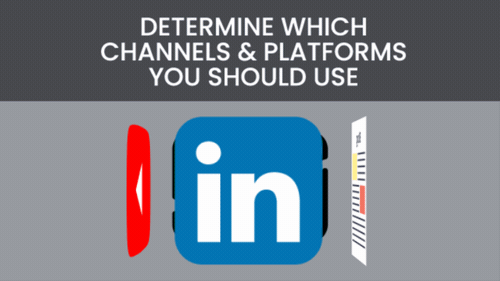
by Heidi Williams | Jan 6, 2023 | Sales Enablement
Effective lead follow-up is a critical part of the sales process, as it helps businesses connect with potential customers and turn them into paying clients. However, it’s not always easy to get it right.
If you follow up too quickly, you may come across as pushy or desperate. On the other hand, if you wait too long, you risk losing the lead altogether. So, what are the best practices for an effective lead follow-up?
Follow up quickly
Research has shown that the chances of making contact with a lead decrease significantly after the first hour, and the chances of qualifying a lead decrease significantly after the first 24 hours. This means it’s important to follow up with leads as soon as possible after they express interest in your product or service. If you can’t follow up immediately, aim to do so within the first few hours.
Personalize your follow-up
Use the lead’s name and any other information you have about them to make your follow-up more personal and relevant. For example, if you know the lead is interested in a particular product or service, mention that in your follow-up. Personalization helps show the lead that you’re interested in them and not just trying to make a sale.
Use multiple channels
Follow up with leads via email, phone, and social media to increase your chances of making contact. Some people prefer to be contacted via email, while others may prefer a phone call or a message on social media. By using multiple channels, you increase your chances of reaching the lead and making a connection.
Be persistent but not annoying
It’s important to follow up with leads, but you don’t want to be a nuisance. Strike a balance by following up a few times before giving up. For example, you might try following up via email and phone, and then give the lead a few days to respond. If you still haven’t heard back, try reaching out via social media. Just be sure to give the lead enough time to respond and avoid sending too many messages too close together.
Keep track of your follow-up efforts
Use a customer relationship management (CRM) system, like HubSpot, so you know when and how you have contacted a lead. This can help you avoid duplicating efforts or missing opportunities to follow up.
Follow up with a clear call to action
In your follow-up, make it clear what you want the lead to do next, whether it’s setting up a meeting, filling out a form, or making a purchase. By providing a clear next step, you make it easier for the lead to take action and move closer to becoming a customer.
Use automation
Use automated email campaigns and other tools to help you follow up with leads efficiently and effectively. Automation can help you reach out to leads at the right intervals, without requiring you to manually send each message. Just be sure to personalize the automated messages to make them more relevant to the lead.
By following these best practices, you can effectively follow up with leads and increase your chances of turning them into paying customers. However, it’s important to remember that each lead is unique, and you may need to adjust your follow-up approach based on the individual’s needs and preferences.
The key is to be proactive, personalized, and persistent, while also respecting boundaries and not being overly pushy. With the right approach, you can build strong relationships with leads and turn them into loyal customers.
If you are looking for assistance in building this approach within your business, reach out to SmarkLabs here.

by Kayla Kingston | Jul 12, 2021 | Sales Enablement
As more and more information has become available online, sales teams no longer have control over what information buyers have. In fact, over 60% of the sales process is typically over before a sales rep can even enter the picture. Because the sales process relies so heavily on marketing efforts such as social media, blogging, and SEO, it is necessary for the two departments to work together more than ever before.
Unfortunately, it often leads to friction between marketing and sales departments, with sales complaining about marketing failing to generate quality leads for them and marketing blaming sales for not being successful with the leads they get. Smarketing provides a solution to this friction and can increase your ROI in the process.
Defining Smarketing
Smarketing (sales and marketing) involves integrating the sales and marketing processes of a business, leading to better growth and larger profits. This alignment is about more than just big picture goals. The departments should agree on a lead generation process, data systems, customer profiles, account scoring, and anything else utilized by the two teams.
How Does Smarketing Drive Growth?
- Alignment drives growth. Highly-aligned organizations see a 32% year-over-year revenue growth. Less aligned competitors saw a 7% decrease in revenue.
- Better alignment, bigger profits. Highly aligned companies are 15% more profitable.
- Top-line revenue is a good thing. Highly aligned teams drive 208% more revenue as a result of their marketing efforts.
What are the Key Steps to Smarketing?
There are several steps you can take to better align your sales and marketing.
- Audit your customer journey and attack major friction points in the sales process that don’t add value for the buyer. Look to marketing to “digitize” these manual processes.
- Skill-up sales teams to align with the buyers’ process, including the content and tools required to facilitate this alignment.
- Align 80% of your sales reps with your ideal customer profile (ICP). Let executives or “whale hunters” develop the other 20%.
- Track and analyze your losses more than your wins, including sales objections along the way. Use this data to feed content ideas for marketing teams.
- Create a playbook that maps content to the customer journey. Show sales teams how to use this playbook to overcome objections or provoke urgency in buyers.
Overcoming Smarketing Challenges
As you create a playbook for smarketing, be on the lookout for potential pitfalls. In today’s tech-driven marketplace where most of the buying process occurs online, communication and understanding between the two departments is a must. In order to collaborate effectively, they need to be equal partners, not separate silos.
Here are six tips to keep in mind:
- Have sales and marketing meet frequently: Establish that no new sales project will proceed without marketing approval and vice versa. Hold each other accountable.
- Build multiple relationships between sales and marketing: Ensure that both teams know each other well and function as one team rather than only leadership meeting together.
- Mix marketing and sales desks together: Structure your office so that sales and marketing employees understand each other’s work on a day-to-day basis.
- Provide many types of feedback between marketing and sales: Empower all team members to give feedback, and listen to that feedback.
- Agree on terminology: Develop a similar language and vocabulary for your smarketing team and build that into your reports and culture.
- Use data to communicate: Utilize daily reports that show exactly the progress of both sales and marketing each day.
The Bottom Line
Building a playbook to align your sales and marketing is a great way to increase revenue. Your marketing team will deliver increased high-quality leads, and your sales team will be equipped to transform the leads into new customers.
Want help with your brand’s B2B smarketing efforts? Let’s talk.

by SmarkLabs | Sep 21, 2020 | Sales Enablement
Traditionally, Sales and Marketing have used inefficient, outdated, outbound methods to monotonously relay their “message” about their products. These methods rarely ever listened to prospects’ pain points or found solutions that fit their needs.
Now, when a buyer identifies their problem, they have access to an abundance of information — finding the solution online in a matter of seconds. To adapt to this new age of informed buyers, it’s crucial for Sales and Marketing to work together, so customers know their product is the right fit.
Inbound Selling Defined
Here’s where inbound selling comes in.
Essentially, inbound selling is the way to sell so that prospects will buy. It’s a modern sales process method that adapts to the buyer journey by looking at prospect’s pain points and then acting as their trusted consultant.
Where does marketing fall into the equation? Both sales and marketing enable each other to achieve inbound selling. When each team’s resources work together, it creates a better, more tailored customer journey for initial prospects to become clients.
Where Inbound Selling Becomes Cross-Departmental
Targeting Prospects
Considering that the power has shifted from seller to buyer, it’s inherently essential for every member of your organization—in both marketing and sales—to know your buyers. When both teams have a common understanding of who your buyer is, it’s easier to keep messaging consistent and provide your prospects with a more personalized experience.
Buyer personas are an effective way to keep track of who your organization is marketing and selling to. Most people believe buyer personas were created for Marketing to target their content at the right prospects. But in fact, Sales should also leverage buyer personas, as they are proven to have several benefits throughout the Sales process.
Sales can take advantage of buyer personas beforehand, in preparation for the sale. Sales reps should review buyer personas to refresh themselves on the pain points, goals, and common objections to prepare for any questions that might come up. Most importantly, buyer personas allow Sales to spend their time the right way, on the right leads. By continually attracting potential buyers who fit into your personas, you will inevitably generate more qualified leads.
Empowering Sales Processes
Researching Leads
In reality, there isn’t enough time in the day for Sales to spend hours prospecting for the right leads. Inbound selling enables Sales to lean on Marketing for some of the heavy lifting.
Marketing can provide pertinent prospect information, including details about when and how inbound leads convert. With this information, Sales can then work with Marketing to learn more about why the lead converted and then tailor their sales process accordingly.
Monitoring Leads’ Engagement
Marketing and Sales can closely monitor how a lead is engaging with their prospecting efforts with marketing automation software. Using these insights, they can then better align their strategies and move leads further through the sales funnel. For example, say a prospect downloaded a case study about how practice management software increased efficiency. This prospect is most likely at the bottom of the funnel, which triggers Sales to move forward in reaching out to initiate a meeting or discussion.
Connecting with Prospects
When a lead comes in, it’s essential to engage with them right away. However, your efforts will only be successful if they strategically align with positioning yourself as a trusted advisor and expert in your prospect’s industry.
Thankfully, Marketing can provide materials meant to educate, inform, and engage with prospects for each stage of the buyer’s journey. With these available resources, Sales can develop an understanding of which content should be used in which situations.
For instance, it wouldn’t be practical to present a prospect who is just researching their problem with a case study. With the knowledge of content marketing, the sales rep would know to instead send them an email that includes an eBook describing a broad theme in their industry.
For inbound selling to work, Sales and Marketing need to speak the same language. When both teams understand their roles in finding, engaging, and converting prospects into leads, inbound selling is sure to be successful.
Learn more about how SmarkLabs can help you align your sales and marketing teams.

by SmarkLabs | Feb 24, 2020 | Sales Enablement
If you’ve been in tune with the sales world long enough, the acronym BANT probably sounds pretty familiar. But that might not be the case to someone who came up on the marketing side of things, especially not in the last few years. In fact, it’s become a bit of an antiquated practice even in the sales world. It’s not broken, though, it just needs some adjustment for the modern B2B world. So, what is BANT?
Developed by IBM way back in the day, BANT is a sales qualification methodology that allows salespeople to determine whether a prospect is a good fit, based on a few different factors. The acronym stands for:
Budget: How much is the prospect willing to spend?
Authority: Does this prospect have decision-making power?
Need: Does this prospect have a problem you can solve?
Timing: Is there urgency?
What’s wrong with BANT?
There’s nothing wrong with BANT as a concept, per se. However, HubSpot points out that the way salespeople tend to use it can rub potential buyers the wrong way. This is especially true in these modern days of inbound marketing when potential customers are typically already heading through the buyers’ journey before even catching the attention of sales.
The fault in how BANT tends to be executed lies in using it as a checklist. Rattling off a bunch of questions to a potential buyer is a surefire way to seem pushy and put people off of anything that you’re selling. Getting all of these basic questions out of the way when talking to a new prospect might seem like an efficient method, but it tends to come off as an interrogation.
The thing about BANT is that you don’t need to rush through it or find out these answers in any particular order. You can use BANT, or TANB, or NABT, or any other combination of those four letters … BANT is just the only pronounceable order.

How BANT can be outdated in B2B
Have you tried the old-timey way of using this method and nixed a prospect right up front because they couldn’t afford you? Well, that’s your first mistake.
Most B2B products use a subscription model. If everything else qualifies this prospect as a good match for your company, there’s probably some workaround you can use to fit into their budget. That could mean offering a free month for a quarterly subscription or giving them the option to pay by the month even if you typically charge once per year.
Some potential buyers also have a looser budget than they might initially let on. Their budget might be based on the value they believe your service should bring—so your job might be to prove to them that your product or service is worth investing in. Don’t take their budget as a definitive way to eliminate them from your prospect list.
It’s also important to note that most businesses that have a group of decision-makers for any significant investment that eats into the budget. This antiquates the idea that you can talk to the decision-maker and just convince him or her that your product or service is worth purchasing.
Also, consider
While there is undoubtedly a place for a modernized form of BANT in your sales qualification practice, Act-On suggests adding a few other factors into the mix as well, such as:
- Buyer personas: While budget, authority, need, and timing should play a part in your prospecting, you should also determine whether these prospects align with your buyer personas. Make your buyer personas your jumping-off point before launching into BANT.
- Demographics & firmographics: Look beyond the basic demographics like location and company size. What are the company’s pain points? How can your product address them?
- Behavioral data: What’s the point of tracking the activity on your website if you’re not taking that info and applying it to your sales prospects? Take data like downloads and responses to email offers and your webinar attendance and consider it a first step to qualifying a lead, before even taking BANT into account.
- Your sales and customer success teams: Surprise! We’re advocating once again for collaboration between your sales and marketing teams. Your sales team is the one having regular conversations with your prospects—so they’re most likely to have insight on aspects like how strict their budget is or how your product can address their needs.

BANT in 2020
We might love having unlimited options when it comes to where to spend our money, but we need to remember that our sales prospects also have that luxury. The fact of the matter is, no matter which problem of theirs your product or service can solve, there’s another B2B company out there that also can.
It’s more important than ever, in this age of disconnection, that you ensure your prospects don’t think that you see them solely as a prospect. “Subtle conversation is how you’ll get the information you need–without scaring off the prospect,” says UpLead. “It’s preferable BANT is implemented as the second step in your sales process, right after initial contact.”

by SmarkLabs | Feb 17, 2020 | Marketing Strategy, Sales Enablement
If you’re in marketing or sales, odds are you’ve heard of account-based marketing (ABM). It’s a method that’s been gaining popularity in the marketing industry because of its ability to deliver high levels of ROI. In fact, “companies with ABM in place generate 208% more revenue for their marketing efforts,” according to Marketing Profs. This type of marketing involves honing in on a few accounts and targeting them with a highly-personalized strategy.
Although ABM is an excellent tool for any company, small businesses stand to benefit the most. This is because “SMBs can’t afford to scatter their money across various marketing tactics and a huge pool of prospects and just hope to generate enough qualified leads to make a profit,” says Niraj Ranjan Rout, Founder of Hiver. Unlike traditional lead-based marketing, ABM enables small businesses to focus all their resources on a few high-value prospects that are likely to buy.
Besides, small businesses are likely to gain internal buy-in across departments with ABM. It can be pricey due to personalization and a multi-channel approach. With more buy-in across the company, the budget for an ABM program can come from multiple departments.
Sound like something interesting to you? Here’s our account-based marketing guide to get you started:

Develop your ICP
First, you’ll want to develop your Ideal Client Profile (ICP). An ICP is different from a buyer persona because it focuses on a company rather than an individual. It should include firmographic data such as company size, industry, number of employees, and estimated revenue plus unique characteristics such as technologies used, hiring trends, or external industry events. Doing this will help you determine the criteria for your target accounts. Take advantage of your CRM or marketing automation platform to begin searching for target accounts.

ABM is different than most marketing methods because the content and messaging revolve around the specific needs of the targeted account. It offers a highly personalized approach. For example, you could send a detailed analysis report to a company that is specific to their business. Avoid sending generic emails at all costs. Ask yourself, who am I creating content for? What content do I already have? This way, you’ll be able to find out where any gaps exist and create content accordingly.
If you’re not sure how to break the ice with a target account, it helps to mention them on a blog or social media post. Compliment them on a recent win and highlight what they did well. They’ll appreciate the praise, and you’ll be on their radar because of it.

Set your targets
After you’ve created your content, it’s time to figure out the best way to reach your target accounts. There are a plethora of options, such as email, social media, video, website, blogs, webinars, infographics, and white papers. If you’re targeting a company that values creativity, you may want to take advantage of video to grab their attention. Or, if you’re looking to reach a tech company, a white paper may be the best way to connect with them.

Your sales and marketing teams need to be aligned for your ABM strategy to be successful. ABM relies on the perspective of a sales team who understands the importance of relationship building, knows how to address a business’s pain points, and has experience working to resolve them. According to Sirius Decisions, “B2B businesses with tightly aligned sales and marketing operations achieved 24% faster three-year revenue growth and 27% faster three-year profit growth.”
Measure your results
Additionally, be sure to measure the results of your ABM campaign. Hubspot recommends focusing on coverage, awareness, engagement, reach, and influence. Here are some metrics you should pay attention to for each:
- Coverage: take a look at the number of target accounts you’ve identified and reached, how much custom content you’ve sent out, the number of stakeholders or key decision-makers you’ve made contact with, the amount of account information you’ve gained
- Awareness: check the number of critical accounts visiting your website, opening emails, reading blog posts, attending events, subscribing to a podcast or newsletter
- Engagement: focus on the amount of time key accounts are spending with your brand and whether they’re responding to marketing activities (click-through-rates, content downloads, email response rates)
- Reach: track how successful each channel was in reaching target accounts, check what percentage of campaign success is coming from your target accounts
- Influence: review how fast you were able to move target accounts through the funnel and close deals with your ABM campaign compared to previous marketing campaigns
Use this data to continue optimizing your campaigns for the highest ROI.
We hope this account-based marketing guide gave you a better idea of how to implement ABM for your small business. When it comes to ABM, it’s all about targeting high-value accounts with highly-personalized content. If you’re looking for help with your ABM strategy, contact us.

by SmarkLabs | Feb 6, 2020 | Sales Enablement
Have you ever heard of a healthy, successful company with just one person behind it? I haven’t either. Differing personality types, barriers, dependencies, and meeting deadlines are some reasons for cross-departmental avoidance. The tension between teams is especially common when it comes to your marketing and sales departments. Fortunately, departmental collaboration doesn’t have to be that way.

Improving Cross-Departmental Collaboration
Here are a few key points that highlight why departmental collaboration is not only crucial to a company and but how it’s also beneficial to each team member.
Viewpoints and Perspectives
Every individual has a unique background, point of view, and a pool of experience that brings a unique perspective to a situation. So bringing a group of people together to discuss solutions or ideas can result in more innovative thinking. Sometimes, just bouncing the bud of an idea off of someone else turns that bud into a flower. Solution-based thinking leads to new perspectives, and problem-solving becomes more creative. A new set of eyes is always a good thing. An idea that might have been right under sales’ noses all along could be brought to the forefront by marketing.
Team Building
Collaborative working allows ideas to cross-pollinate. Discovering that your lead creative also has experience with business development can certainly help bring the team to a solution. But it also enables everyone to realize how their work and skills fit into the bigger picture and the company’s high-level goals. We all get tunnel vision sometimes – and a fresh perspective opens doors. Departmental collaboration between teams that have historically been at odds with each other, like sales and marketing, can also eliminate the illusion of a hierarchy. When we are all able to see the value each individual brings to the table, we can execute each other’s ideas and elevate the project as a whole. This insight, in itself, builds team strength.
Individual Growth
Understanding and recognizing the value that comes from making sure each person on your team feels rewarded and incentivized to participate is key to finding the potential in collaboration. A lot of growth can happen when there is space to speak up and listen to ideas, benefiting both sales and marketing. Not only is that good company practice, but it’s excellent for each team member as an individual.
Company Impact
When there is an understanding between sales and marketing, there will ultimately be better results. Think of a time you had the opportunity to explain exactly why you felt a certain way or why you did something someone else may not have understood. I bet being heard felt good. Departmental collaboration fosters a healthy environment. And in a healthy environment, coworkers will establish deeper connections and make more progress toward both team’s end goals. Understanding each department’s challenges and goals cultivates creative solutions and encourages teamwork and growth.
Departmental collaboration creates an environment for learning and understanding. It leads members of both teams to work harder for each other, innovation to blossom, and goals to flourish. Like Aristotle says, “The more you know, the more you know you don’t know.”

Alicia Griffin is SmarkLabs’ Project Admin and Ops Support Specialist. With a drive for seeing people reach their full potential, Alicia is passionate about creating collaborative and inclusive environments. Otherwise, you’ll find her staring for hours at a painting, stuck in a book or hanging out with her super handsome golden retriever, Bentley.














